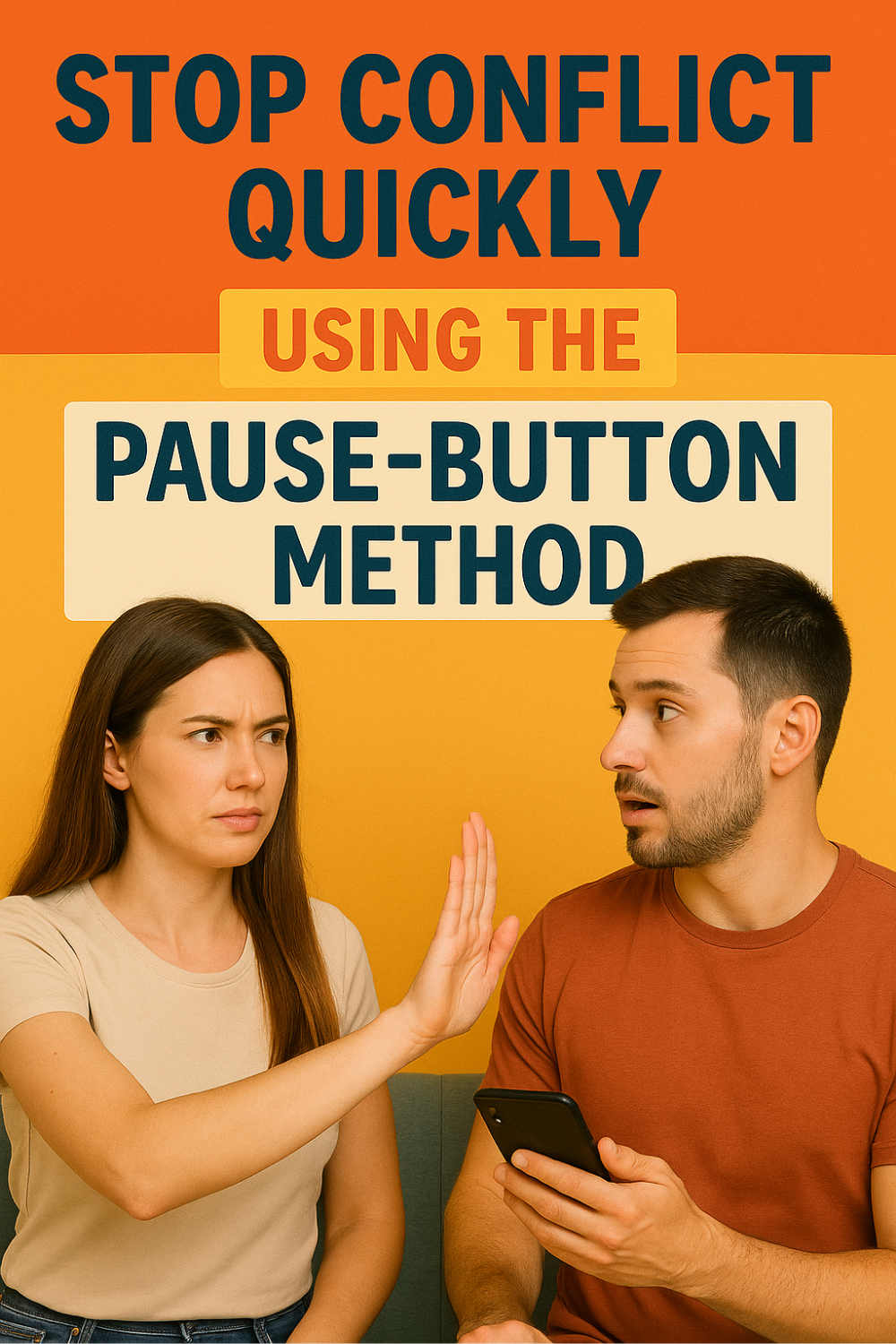Have your arguments ever escalated quickly, leaving both of you hurt and frustrated? The pause-button technique helps you instantly de-escalate heated conversations, preventing further damage to your relationship. By briefly stepping away and regaining calmness, you can return to the discussion with clearer minds and hearts. Discover how this simple, powerful technique improves your communication, reduces conflict, and strengthens your bond effortlessly.

- What Is the Pause-Button Technique?
- Why Pausing Mid-Argument is Effective
- Clear Steps to Implement the Technique
- Essential Ground Rules to Follow
- Common Mistakes and How to Avoid Them
- Returning to the Conversation Constructively
- Creating Long-Term Positive Communication Habits
What Is the Pause-Button Technique?
The pause-button technique is a simple strategy for de-escalating conflict by momentarily halting a heated argument. When emotions run high, communication becomes challenging and often destructive. Pausing temporarily gives both parties a chance to cool down, reflect clearly, and approach the discussion constructively afterward. Rather than avoiding conflict altogether, this technique encourages respectful, mindful communication, leading to healthier relationships overall.
Why Pausing Mid-Argument is Effective
Arguments typically escalate due to emotional reactions overpowering rational thought. Pausing mid-argument interrupts this escalation, allowing emotions to subside naturally. Stepping away momentarily reduces stress, anger, and defensiveness, facilitating clearer thinking and greater empathy. As a result, conversations become less aggressive and more solution-focused. Regularly using this technique promotes respect, understanding, and significantly improves your emotional connection.
Clear Steps to Implement the Technique
Using the pause-button technique successfully involves straightforward steps:
Step 1: Clearly signal the need for a pause, gently and respectfully, by saying, “I need a moment to calm down,” or “Let’s pause for a minute.”
Step 2: Physically separate briefly, ideally for 10–30 minutes, to regain composure.
Step 3: Engage in calming activities during the break, such as deep breathing, a brief walk, or journaling emotions.
Step 4: Return to the conversation calmly, ready to discuss constructively and respectfully.
Following these steps clearly ensures effective use of the pause-button technique, preventing harmful escalation.
Essential Ground Rules to Follow
Establishing clear ground rules makes using the pause-button technique easier and more effective:
- Mutual Agreement: Both partners must agree in advance to honor pause requests whenever needed.
- Clearly Defined Duration: Agree upon a reasonable time limit (typically under 30 minutes) before returning to the conversation.
- Respect the Pause: Never follow, pursue, or pressure your partner during the pause; respect their need for space.
- Commit to Returning: Always agree to come back to the discussion calmly and respectfully afterward.
Implementing these rules ensures the pause-button technique consistently reduces tension rather than increasing frustration.
Common Mistakes and How to Avoid Them
Avoiding typical mistakes maximizes the technique’s effectiveness:
- Not Pausing Early Enough: Request a pause at the first sign of emotional escalation rather than waiting until damage is done.
- Misusing the Pause: Don’t use the pause as an escape from conflict entirely; commit to resuming the conversation constructively afterward.
- Overly Lengthy Pauses: Brief pauses (10–30 minutes) are best; prolonged pauses may increase frustration or anxiety.
- Returning Unprepared: Take your pause seriously, actively using calming strategies, rather than dwelling on anger.
Being mindful of these common errors ensures effective, positive outcomes every time.
Returning to the Conversation Constructively
After pausing, returning constructively significantly improves outcomes:
- Begin calmly, expressing appreciation for your partner’s willingness to pause and reflect.
- Briefly summarize your own feelings and acknowledge your partner’s emotions respectfully.
- Focus clearly on solutions rather than revisiting grievances excessively.
- Maintain a respectful tone, staying open-minded and empathetic throughout the conversation.
Returning thoughtfully ensures the pause-button technique consistently strengthens your relationship.
Creating Long-Term Positive Communication Habits
Integrating the pause-button technique into your communication habits ensures lasting relationship improvements:
- Regularly remind each other of your commitment to respectful pauses during arguments.
- Practice pausing in small disagreements, making it natural during more significant conflicts.
- Regularly discuss and reinforce the positive outcomes achieved by using this method.
- Celebrate successes, acknowledging improvements in emotional connection and reduced conflict.
Building this habit clearly supports a healthier, happier, and more resilient relationship over time.
Frequently Asked Questions
How long should a pause during an argument typically last?
Ideally, pauses last between 10–30 minutes, allowing sufficient time to cool down without causing unnecessary anxiety.
Can the pause-button technique work in all relationships?
Yes, it can help in most relationships, provided both partners agree to its respectful use and consistently honor pauses.
What if my partner resists taking pauses during arguments?
Gently discuss benefits beforehand, highlighting reduced stress, better understanding, and healthier conflict resolution outcomes.
Is pausing considered avoiding conflict?
No, pausing is a temporary step to calm emotions, allowing healthier, constructive communication afterward.
How often can we use the pause-button technique?
Use as often as needed, ideally whenever emotions risk escalating negatively, to maintain respectful and clear communication.